One of the plants I rely on at the free clinic is Horse chestnut (Aesculus hippocastanum, Sapindaceae). Its primary use is for chronic venous insufficiency.
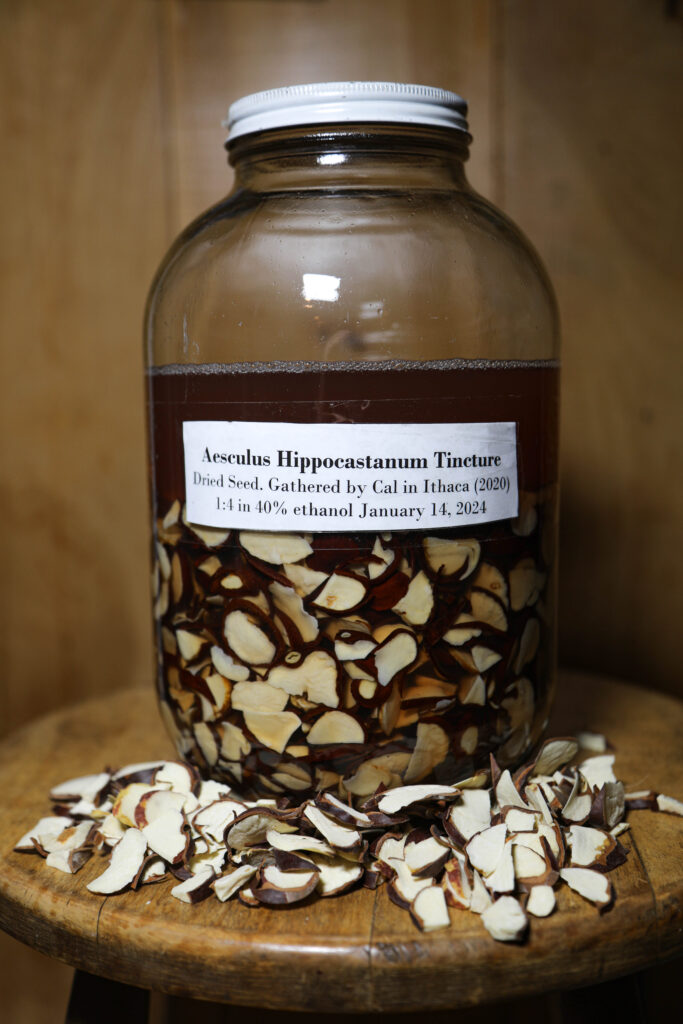
Botany
Horse chestnut is a tree native to the Balkans. The tree is very cold tolerant, with cultivated trees thriving as far north as northern Norway (which is strange, as the Balkans are in southeastern Europe). It is grown in the US mainly as an ornamental, though I have also seen a few in old fields, likely grown for its large canopy and the shade it provides.
It is grown as a street tree for its attractive upright inflorescences of white and pink flowers. Individual trees can live up to 300 years. (While researching this, I learned there is a 190 year old tree growing at the Women’s Rights National Historical Park, about an hour from where I live. I’ll look for it the next time I am in the area.)
It also has large opposite palmate leaves (making it easy to identify), interesting leaf scars, and the spiky green fruit husks surrounding the medicinal seed.
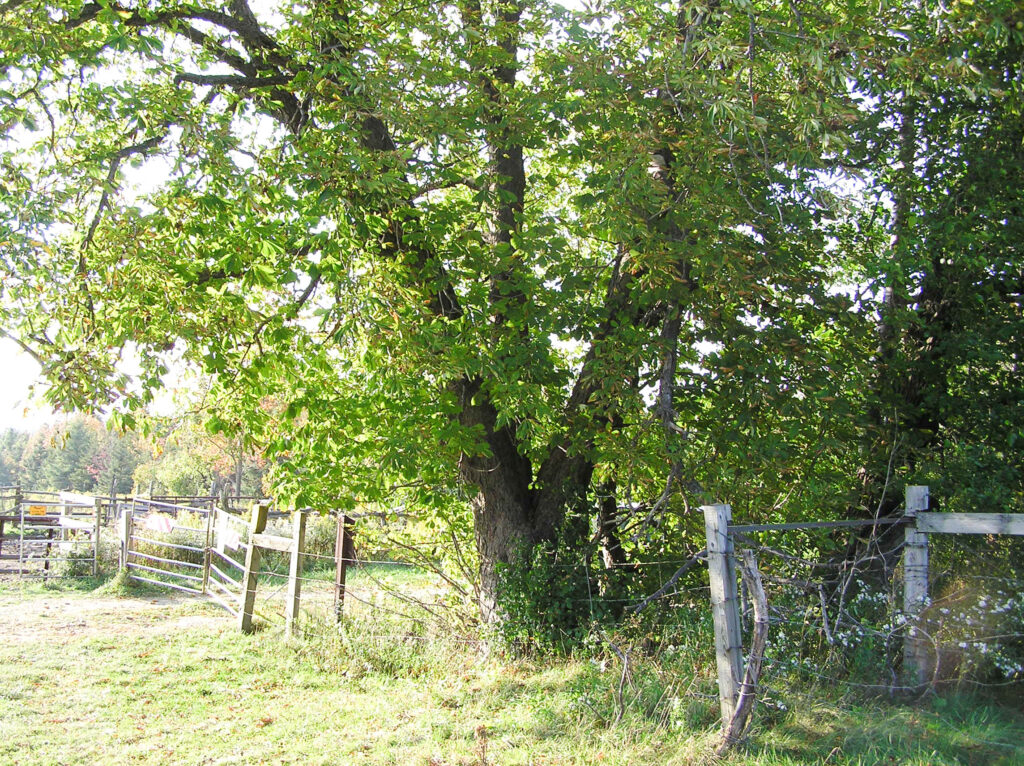
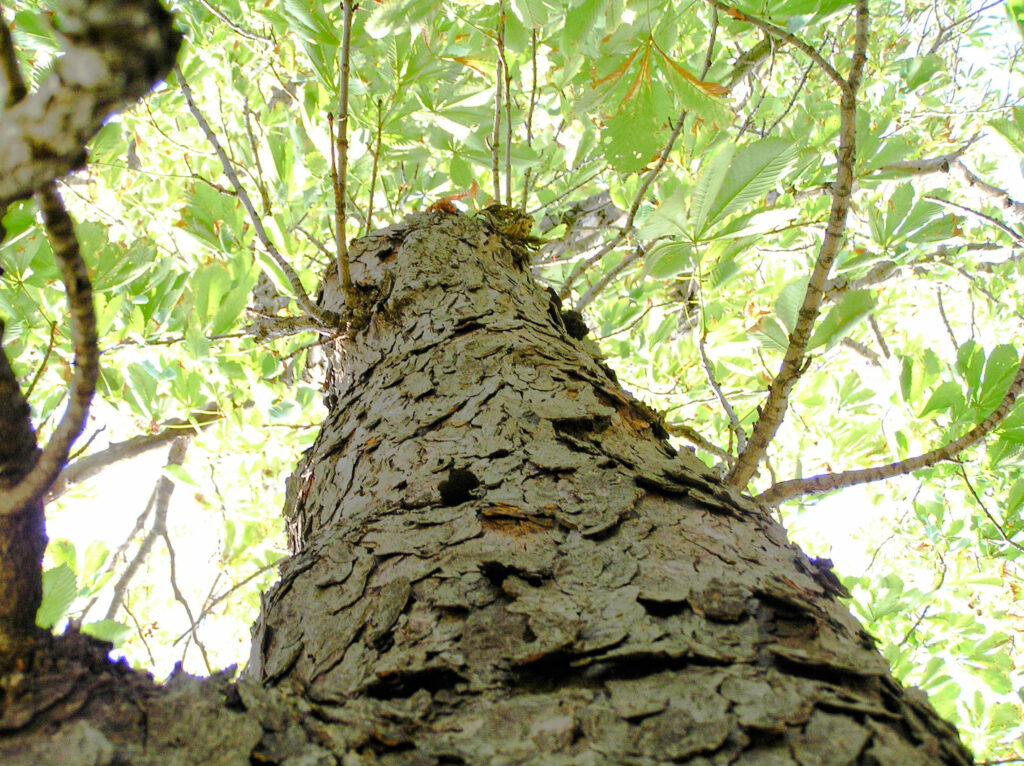
Medicinal Uses
The large, brown, shiny seeds are the medicinal part of this tree. The primary use of Horse chestnut seed is as a vascular tonic for chronic venous insufficiency (CVI). Horse chestnut preparations can help veins maintain their integrity and thus decrease CVI. Horse chestnut can also be helpful for other venous problems such as varicose veins and hemorrhoids. It is used both internally and externally.
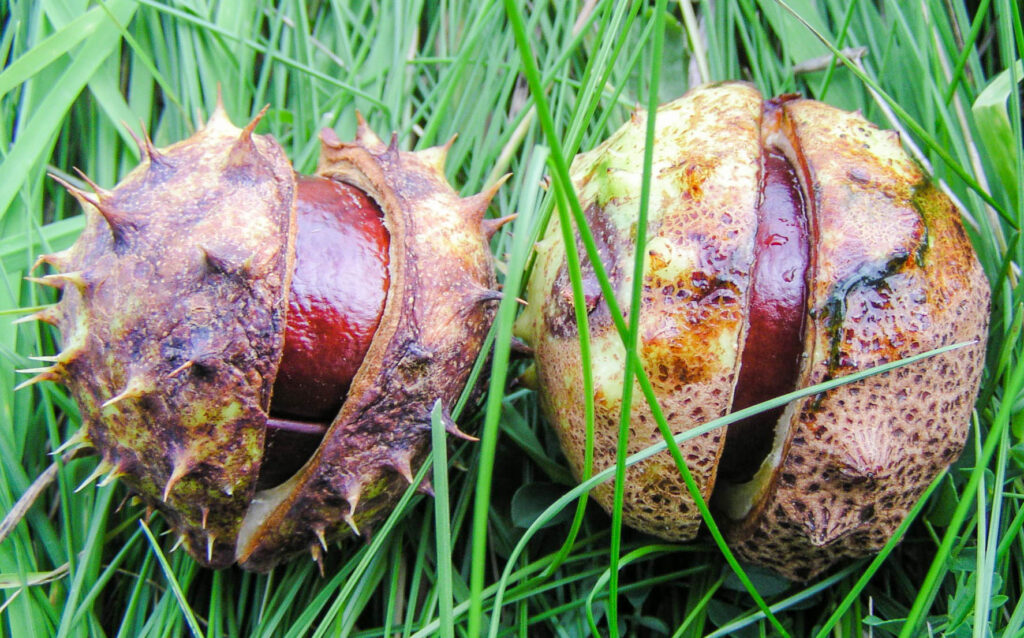
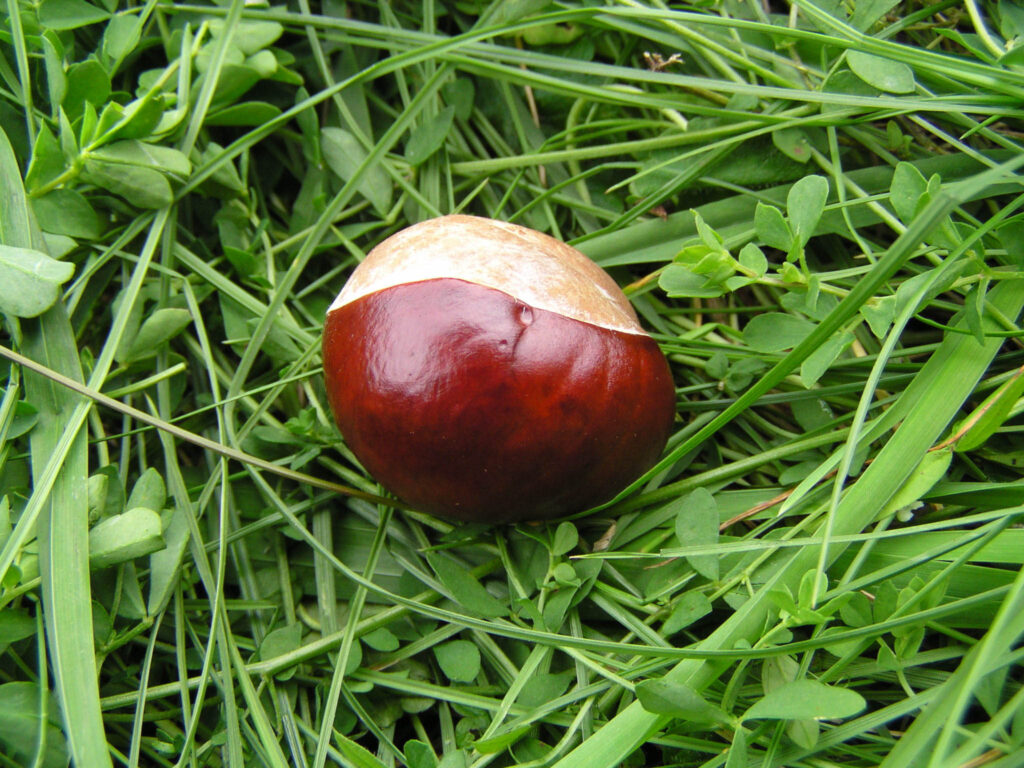
A Simplified Explanation of Chronic Venous Insufficiency
The oxygenated blood leaving the heart is under high pressure due to the rhythmic pumping of the heart into the arteries, moving blood throughout the body. The veins (venous) carrying the blood back to the heart are a low-pressure system. They move the blood with the help of skeletal muscles (which is why movement is so important). They also have one-way valves to prevent blood from going backward. And when standing, the blood in your legs is pushing up against gravity.
Due to multiple factors, the veins in the legs can begin to stretch. This decreases the integrity of the valves, which allows blood to move downward and pool, thus stretching other veins and causing them to lose their overall tone. When this happens to veins near the skin, it is called varicose veins. When it happens to deeper veins in the legs, it is called chronic venous insufficiency. The symptoms of CVI include edema (swelling) since fluid is now leaking out of the veins and into local tissues. It can also cause itchiness, pain, skin color changes, tiredness, and skin ulcers.
One of the most critical diagnostic considerations is whether the symptoms are due to the veins or the heart. This should be determined before treatment because if it is due to heart failure, it may be a medical emergency.
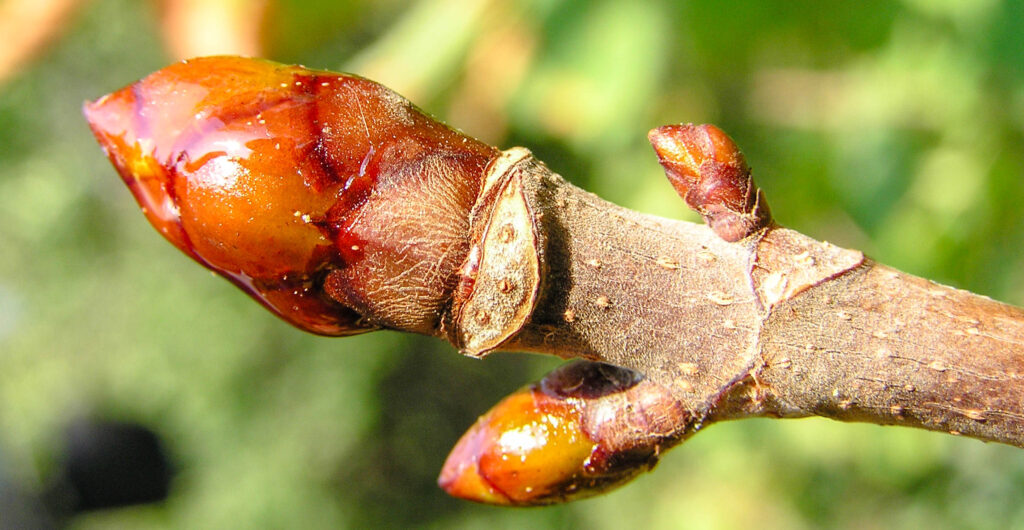
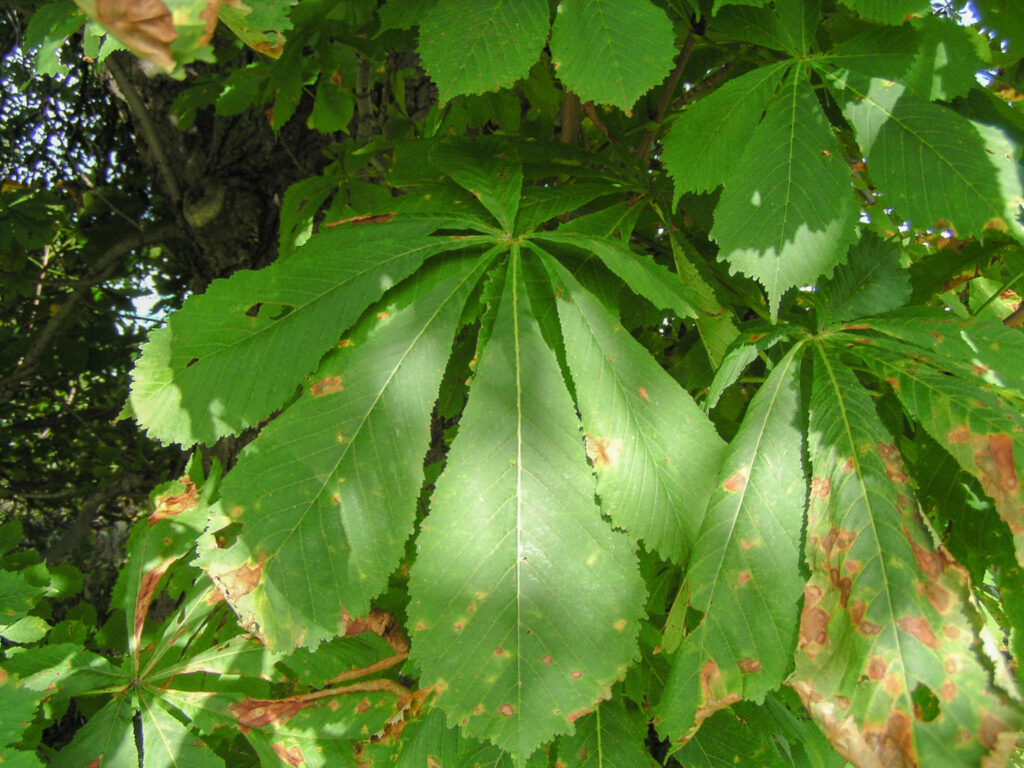
Research
There is a lot of research on Horse chestnut for CVI, though many of the studies are done with Horse Chestnut Standardized Extract (HCSE), which is a standardized preparation with a different balance of constituents than whole seed herbal remedies (the type herbalists usually prepare).
Most of the research and clinical trials show that Horse chestnut extracts and HCSE improve CVI symptoms and are comparable to the benefit of compression stockings.
As someone who reads many herbal clinical trials, Horse chestnut stands out for its consistent positive results in these studies.
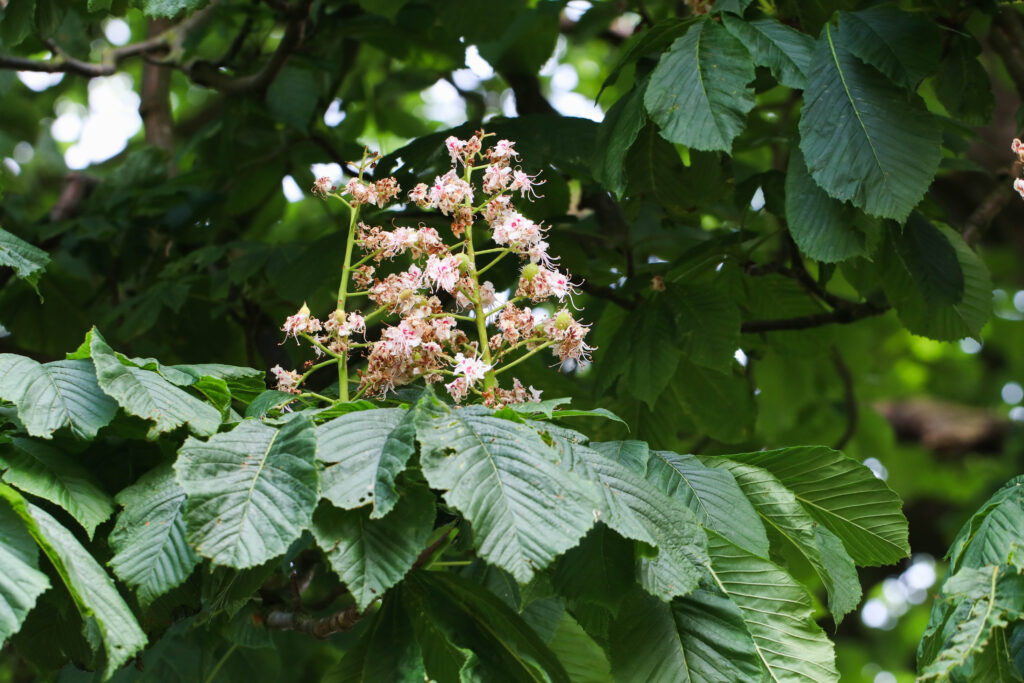
Safety
There is concern about the use of Horse Chestnut as medicine, as the seeds are somewhat toxic when eaten raw. This is true, but the amount ingested for medicines appears safe, as seen through multiple clinical trials, as well as a lack of adverse reports from people taking it (it is a popular medicine in Europe). In practice, I have not seen any adverse side effects, but there is always the possibility of individual negative reactions. The most cited adverse effect is digestive upsets.
Many of the studies were done on HCSE, in which aesculin, considered a toxic compound, is removed. Though there are studies with whole seed medicines, which also have a good safety profile.
What this boils down to is that Horse chestnut seed tinctures and capsules seem safe, but eating the seeds can be dangerous.
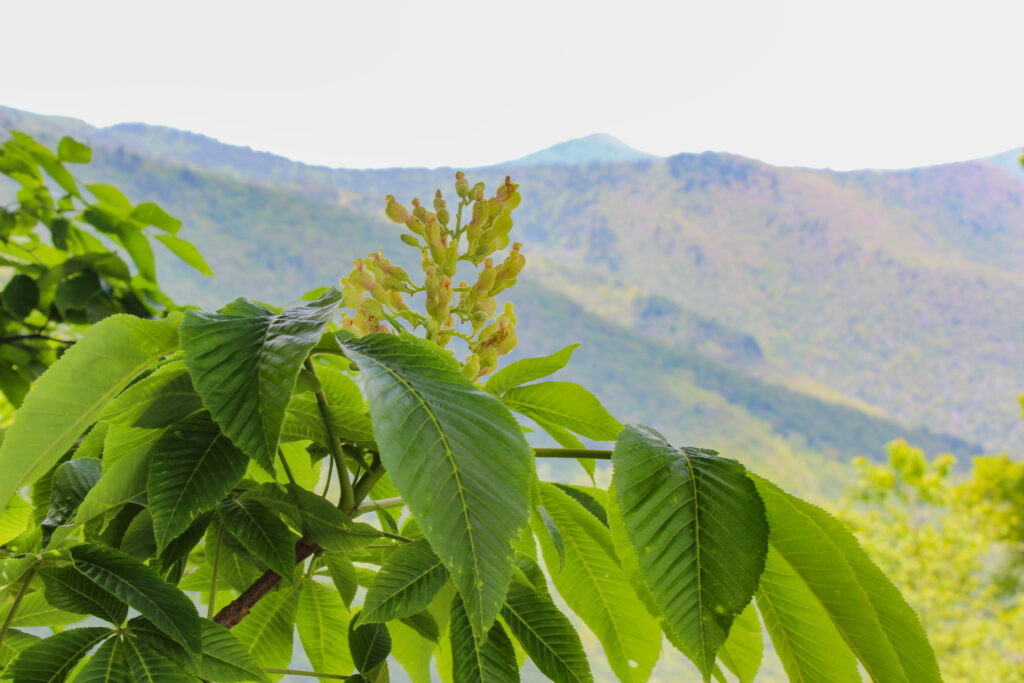

Other Species
There are 6 Aesculus species in the US and Canada. These are usually called Buckeyes (with Ohio being the Buckeye State). The seeds to all of these are considered poisonous (though some are eaten with a lot of preparation to remove the toxicity. I don’t recommend this.). I do not use any of the native species for medicine.
Note, Horse chestnuts are not closely related to the edible Chestnut (Castanea sativa, Fagaceae) which are related to oaks. They are also not related to Water chestnuts (Eleocharis dulcis, Cyperaceae), which are the corms (underground storage structure) of a sedge.
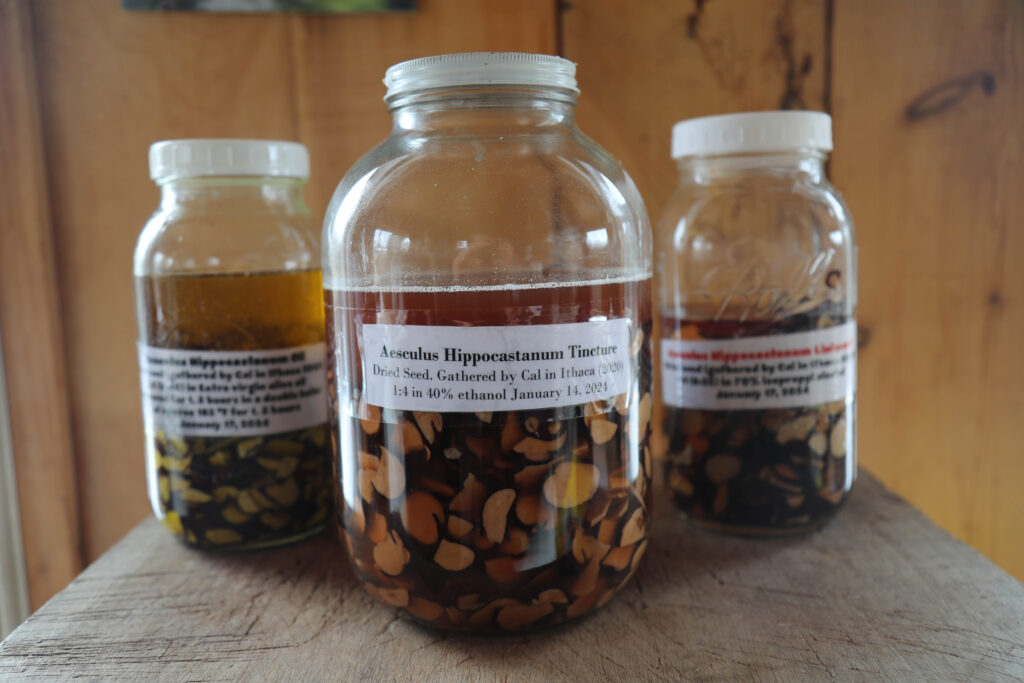
Preparations
The seeds can be prepared for internal and external usage. The seeds should be either sliced thin or blenderized (put in a blender) when making any of the below preparations. For internal use, I use both tinctures and capsules.
For the tincture, I use the dry seeds at a 1:4 ratio in 40% ethanol.
For external preparations, both infused oil and liniments are helpful. I made an infused oil by heating the dry Horse chestnut seeds in a double boiler in extra virgin olive oil for 1.5 hours at approximately 184ºF (84ºC) at a 1:4 ratio. The liniment was made at 1:4 in 70% isopropyl alcohol.
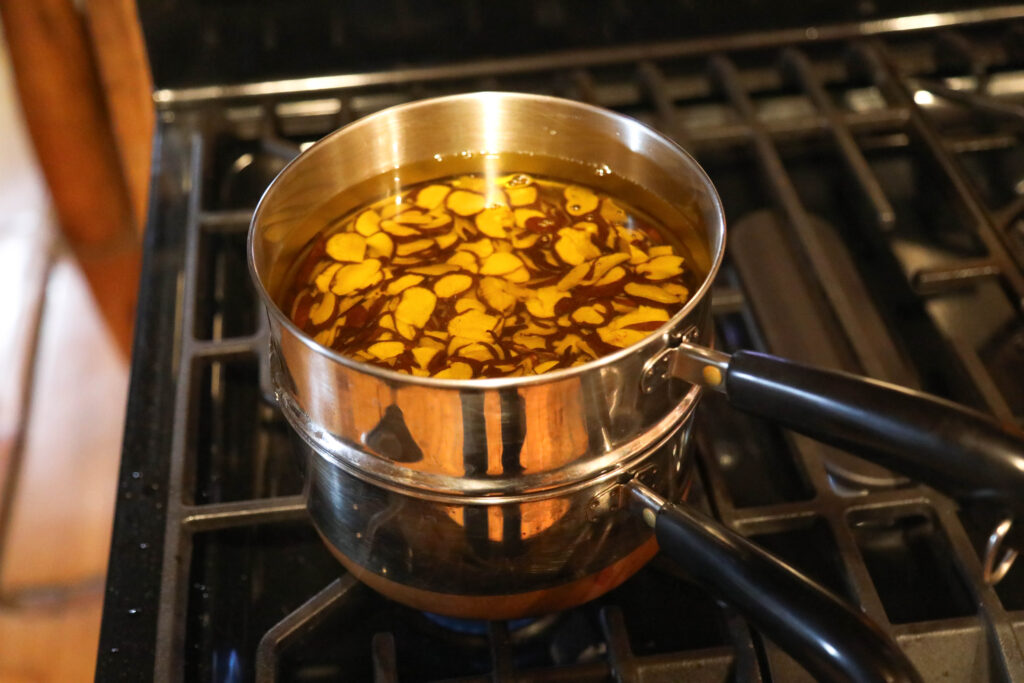
Dosage (generalized)
Internal use
Tincture-1 dropperful (2 ml) 2 times daily
Capsule-2 capsules 2 times daily
External use
Oil and liniment-apply topically 1-2 times daily
Internal and external preparations can be taken together

Summary
I have found Horse chestnut helpful, both internally and externally for CVI and vascular health issues. Though, like all medicines, it does not help everyone. Since the symptoms of CVI can be due to a heart condition, this should be ruled out before using Horse chestnut. While there is concern about the toxicity of these seeds, in studies and my personal experience, the amount used as a medicine appears safe.
